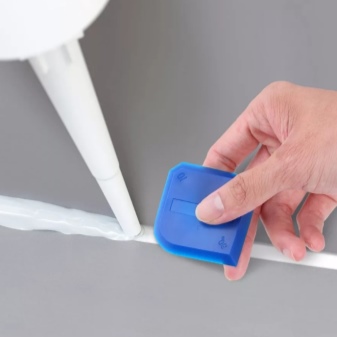All About Plastic Spatulas

Knowing everything about plastic spatulas is useful not only for professional painters and plasterers, foremen. Choosing the right accessories for decorative plaster, wallpaper and grouting is very important. It is useful to figure out how to use a wallpaper spatula to smooth out various masses and substances in other work.
Peculiarities
Most people associate the word "spatula" with a metal tool. But the plastic spatula is significantly different from its steel counterpart. It is much softer, while not too bad in terms of its working resource. What is important, the lack of cutting properties in plastic made it possible to smooth the wallpaper, while steel would undoubtedly tear and deform them.


Applications
Of course, the case is not limited to one application for wallpaper. Such a tool may be required for many other works, also accompanying any repair and construction. Often, spatulas are used to pre-apply wallpaper glue to rolls and walls. And I must admit that such a use of it is very successful. In any case, other tools cope with this task clearly worse, requiring more effort.
A rubber tool with a handle is often used for grouting tiles, metal tiles and similar materials. It reliably removes excess assembly mixtures. At the same time, nothing is scratched or broken, the formation of cracks and holes is excluded where they are obviously not needed. It is also necessary to grind the seams when laying out the decorative stone. Lack of attention to this work is no less harmful than refusal to smooth paper or non-woven wallpaper.


High-quality rubber is so gentle on any surface that it is even suitable for finishing and restoration work. A similar tool can be seen in the hands of real restorers. A separate category is spatulas for stretching smears. They have even been given a special name in foreign terminology - flexi-strip. This is no longer a construction tool, but a medical device.
To obtain it, you need a special brand of plastic, specified in special standards. Blood smears will be smeared on the surface of the specimen slides. Initially, the device is designed for one-time use. In case of urgent need, chemical disinfection is allowed. High temperature disinfection is prohibited.
We should also mention the trowel for PVC windows. It is used in the finishing process. Despite being made of plastic, they should work as carefully as possible. It is useful to prepare spatulas of different sizes so as not to face problems due to the different dimensions of the walls and slopes.
In the process of repair, they also use tools for decorative plaster (all different, and each for its own specific task).



How to choose?
The kit of a good home craftsman (and even more so a professional) should include a variety of tools. The size of the working blade determines the possibility or impossibility of using a spatula in a particular case. Of course, the larger the fixture, the more material it can throw on the wall, and the larger the strip that can be leveled at one time. But in narrow places and at corners, behind batteries and in other hard-to-reach points, all this will rather create inconvenience. It is necessary to look at how good the work surface is.
The slightest unevenness threatens it with damage to the main material. Another nuance is the comfort of the handle.Here they look strictly at their preferences and tastes, personally try on the device in hand. As for the width, then practice has brought out clear recommendations.
The optimal value is from 200 to 250 mm, and everything that is larger and smaller should be bought only by those who firmly know their needs.


Additionally worth watching:
-
how smooth and flat the blade is;
-
whether the handle is firmly held;
-
how plastic bends;
-
what kind of feedback other consumers give.


How to use?
To fill cracks and holes, a strictly defined amount of finishing mixture is taken. The same is done with depressions. The less you have to remove the excess in the end, the better. It is necessary from the very beginning to accustom yourself to work energetically, but gracefully, leveling the material with calculated movements. When the rough alignment is done, proceed to fine rework.
There is no need to rush here. You should strive for the maximum smoothing of the surface. The working part of the trowel with a width of 500-600 mm is ideal for this purpose. To apply putty on it, use a smaller spatula, 100-150 mm. At the very beginning of the filling, the tool is guided almost parallel to the wall.
Eliminating the appearance of uneven areas is not as difficult as it seems. The leveling compound is simply placed in a small amount in the middle of the trowel. If surplus does appear, they are removed and returned to the container.
For fine filling, the angle should be 20 degrees. Whether to distribute the solution from top to bottom or horizontally is not important.















The comment was sent successfully.